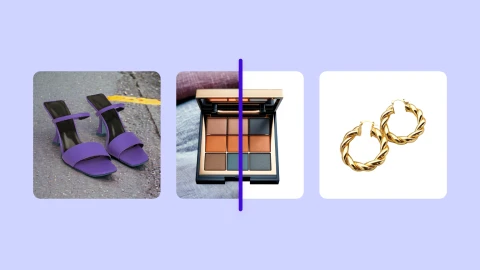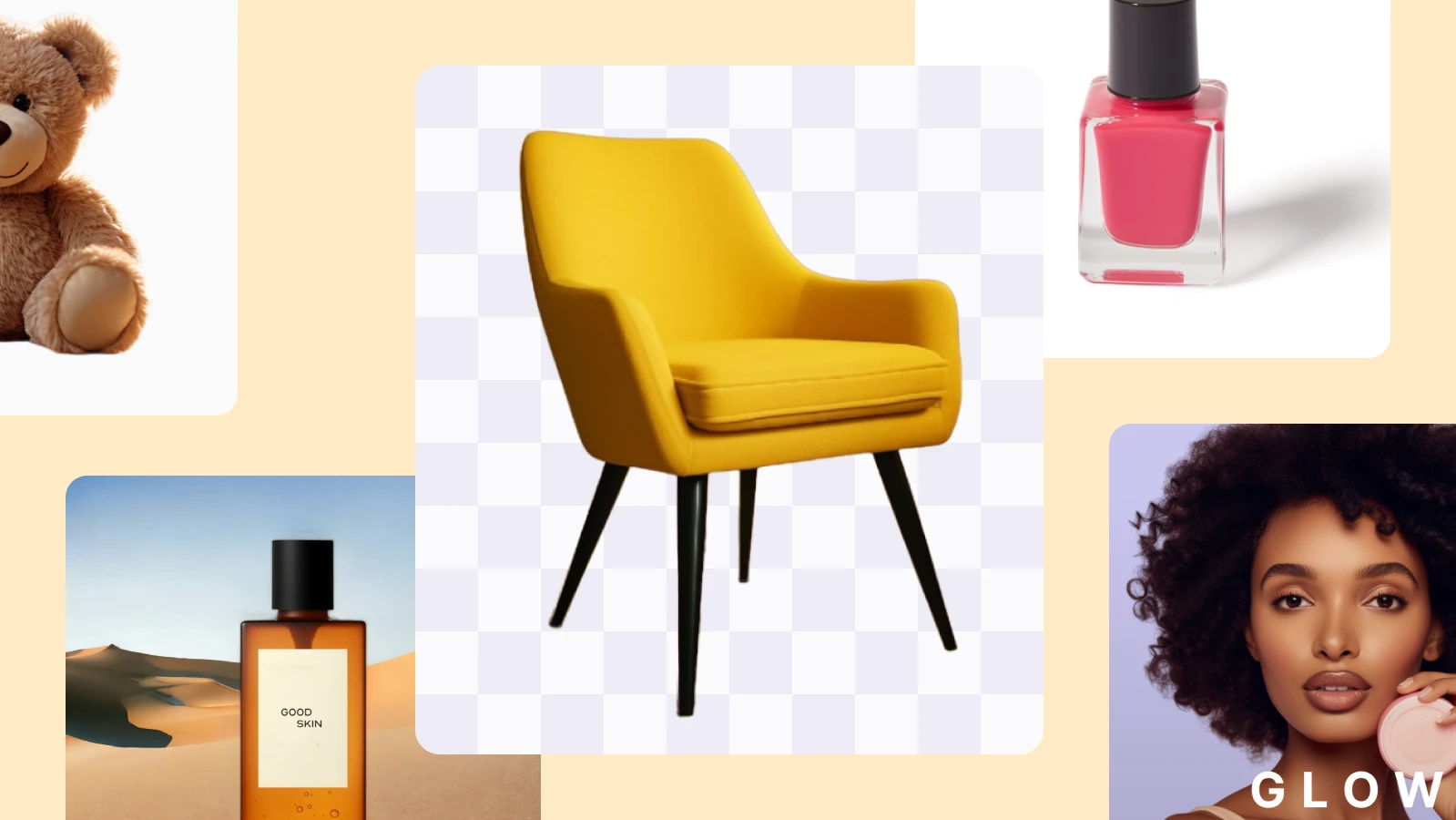Best AI product photography tips to win customers in 2025


First impressions matter—a lot. In fact, when shoppers visit an online store, it takes only 50 milliseconds for them to form an opinion about the site, deciding whether to stay or leave. One of the most powerful tools in those critical moments? Product photography. High-quality visuals not only captivate attention but can also influence whether a visitor becomes a buyer.
The impact of product photography goes beyond first impressions. It plays a central role in ecommerce marketing, merchandising, customer acquisition, and conversion optimization. With 90% of shoppers considering high-quality photos “extremely important” or “very important” to their purchasing decisions, and 60% expecting to see at least three or four images per product, visuals do more than showcase products—they build trust, convey information, and create desire.
But creating high-quality product images at scale is no small task. From lighting and framing to selecting backgrounds and styling products, there’s much to master.
This article provides five practical tips for crafting exceptional product photos and enhancing them with generative AI techniques.
1. Use optimal lighting
Light is considered one of the most important base elements of an image. The lighting you use impacts everything from the tone and appearance of the object to the level of detail that’s visible in the image. Heavy shadows can evoke feelings of drama or mystery, while bright, uniform lighting portrays clarity.
In most cases, optimal lighting for product photographs means the right level of exposure, clean, uniform lighting, and the proper use of white balance to ensure the colors in your product appear true to life.
Overexposure in an image can make the product difficult to see in detail and obscure colors. Underexposure, on the other hand, creates a flat and dull image with muted colors that doesn’t portray the product in a flattering manner. A balance between the two is essential, which is accomplished through a combination of lighting techniques and camera settings.
Lighting for product photos should be direct, uniform, and free from harsh shadows and reflections. This can be achieved either through natural light or studio light.
Natural light through a window is the ideal solution for photographers without access to studio lighting. It’s cheap and easy to set up and only requires you to contend with a single light source. To use natural light, set up a table or shooting platform as close to the window as possible. Position your product at a 90-degree angle to the window so that the light falls uniformly across the product.
Studio lighting can come through various tools, such as spotlights, softboxes, strobe lights, diffusers, or flash bulbs. Continuous lighting—through a spotlight, softbox or diffuser—is typically used for product shots, as it stays steady and consistent over the subject as photographs are taken. Studio lighting gives near endless control, but does require you to understand single- and multi-point light set-ups. This adds greater complexity, but also greater flexibility.
Camera settings for product photos will vary depending on what you’re shooting and the light source you choose. Three settings to keep in mind that affect light exposure are:
Aperture. How wide your lens is, which dictates how much light is let in.
Shutter speed. How quickly the shutter opens and closes. Faster shutter speeds let in less light.
ISO. Your camera’s sensitivity to light. Higher ISOs means your camera is very sensitive to light.
Each of these settings need to work together to achieve the right level of exposure for your lighting conditions. Experiment with different settings until your images are both properly focussed and properly exposed.
Of course, not all photographs are going to turn out perfectly. If you get back to your office and realize that some of your product images aren’t quite right, then lighting adjustments in post-processing are a good last line of defense.
For this, you can either use a traditional photography software or a modern, professional AI-powered platform like Photoroom. Traditional tools, like Photoshop, are more complex and require great editing skills. But with AI tools, you can enhance image quality in minutes, even with zero editing skills.
Add realistic shadows to your product shots using AI technology.
Elevate the quality of your images, adjust colors, and sharpen your product images.
Lighten up the object in the foreground of your image to make it the focal point in your image.
Adjust multiple elements like color, contrast, shadow, hue, saturation, and brightness to make your photos pop.
 2. Create balanced composition
2. Create balanced composition
Like with lighting, composition is an essential element in product photography. It dictates the arrangement of objects within a frame or image, serving as a visual guide that draws users’ eyes to specific features of your products.
Product photographs should be composed in such a way that is both visually appealing and interesting to the customer, and complementary to the subject in the photos. A well-composed photo can quickly grab attention and inspire potential customers to engage with your brand and content.
Composition, however, is not a singular element. Instead, it’s broken into various techniques that collectively comprise the composition of the image.
These techniques include:
Framing is the process of choosing what you’ll include into the frame of a photograph, and what you’ll leave out. This is the foundation of the photo’s composition, and helps you draw attention to specific subjects and objects. When photographing a product, consider how much of the frame a product should fill, and what else you might include in the image.
Rule of thirds is a composition technique that involves dividing an image into nine equal parts—two horizontal and two vertical lines that intersect at four points. Professional product photographers will place their subjects at one of these intersections, helping to create more visually engaging and balanced composition. To accomplish this, first determine the main focal point of your image. Position it along one of the vertical or horizontal lines, or at one of the intersections. If you have multiple objects in frame, align them to other lines or intersections. In the end, you will have a balanced and/or symmetrical image like the one shown below.
Symmetry refers to the balanced arrangement of elements within a product photography. This technique helps to create a sense of stability and order in the image, and is a great option for products that require precision and detail, such as jewelry. Of course, you can also play around with asymmetry, which helps to create a sense of movement and energy in the photo.
Leading lines are overt or subtle lines within the image that direct the viewer’s eye to a specific focal point. This requires you to consider the placement of the product within the frame, and how the lines of other elements interact with that focal point. The image below shows an example of a subtle leading line, directing the eye toward the primary object.
Further reading: 14 product photography ideas to boost online sales
3. Select the right background
It’s not just the product itself that matters in an image. What you include in the background also makes a significant impact on the overall impression of the product, along with the tone, mood, and atmosphere that you create. Backgrounds help you make the product pop, situate it within a real-world context, or evoke a specific feeling in your shoppers.
Here are some ways that the background can impact your image:
Clean, complementary backgrounds help to showcase your product more clearly
White helps make the product image pop
Coloured backgrounds add emotion and thematic intrigue
Environmental or contextual backgrounds situate the product within a familiar setting, helping the user to visualize how they would use it
Textured backgrounds can draw a connection between your product and a specific place, time, or event
In addition to tone and impression, the background you select during production can also have a big impact on the overall versatility of the image. Flat, mono-color backgrounds are likely best for online stores and marketplaces, while contextual backgrounds might be more suited for lifestyle marketing campaigns.
Think about how you intend to use the product image, and on which channels. This will help you determine which backgrounds—and how much variety—you should account for during production.
However, with AI photo editing tools like Photoroom, backgrounds don’t have to be set in stone. With a few clicks, you can use the background remover to instantly remove a picture’s background, leaving a blank canvas for new colors or settings.
Afterward, you can use pre-built background colors, textures, and images to quickly create new variations of your images; and a background image generator to create brand-new contextual backgrounds.
📘 Dig deeper: How to add a background to a photo online
The following image, for example was created by using the following prompt in AI Backgrounds:
“A cup of coffee sitting on a light wooden table.”
 This level of flexibility and speed is a game changer for ecommerce brands, allowing them to take a single batch of product photos, and quickly swap out the backgrounds to create endless variations for their sales and marketing activities.
This level of flexibility and speed is a game changer for ecommerce brands, allowing them to take a single batch of product photos, and quickly swap out the backgrounds to create endless variations for their sales and marketing activities.
4. Use the right props for styling
What you display with your products, and how you style them, can also enhance the experience for shoppers. But, it can also distract from the main attraction if not done right.
If you do decide to add props to your image, such as leaves or twigs to go along with a rustic piece of decor, then be sure to consider the following two factors:
Your brand. Think about the general style and tone associated with your brand. This should come through in your product photography. If you’re more of an outdoor, lifestyle brand, for example, then incorporating elements of nature in your photographs as mentioned above might make sense. If the focal point of your brand is your high-quality products, however, you might want to reconsider anything that might steal attention. If you do choose to use props, all components of your visual brand should be incorporated.
Your audience. Think about who your audience is, and what appeals to them. This will help determine the best way to stage and style your products, and will help you determine if props are the right approach.
Mood boards are a great way to experiment with both of the above elements. Bring together different ideas for backgrounds, props, product arrangement, and image layout. Experiment with different arrangements to help find one that best tells your product story.
For example, you can include the tools or ingredients that you used to make the product, or other items that might be used alongside it. Olives alongside a bottle of olive oil is an example.
Generative AI tools within Photoroom gives you near endless possibilities for props and backgrounds to help find the perfect arrangement for your photos. As outlined above, using the recommendations or custom prompts in AI Backgrounds allow you to quickly generate new and unique backgrounds and props to complement your image.
The following image, for example, was also created using the following custom prompt in AI Backgrounds:
“A bottle of hand soap sitting on a stone table with aloe vera plants and sea salt”
 5. Retouch pictures with AI tools
5. Retouch pictures with AI tools
Post-processing is a critical step for any photographer. This step involves everything you do to an image after it’s produced to get it into the ideal shape for use in sales and marketing activities.
Post-processing can include:
Adjusting colors, contrast, and white balance
Cropping or resizing the image
Removing unwanted objects
Replacing or removing the background
Depending on the task, AI-powered photo editing apps can improve the accuracy of your post-processing activities and expedite the process significantly.
An example of how AI can be used in post-processing—in addition to the examples shown so far—includes using the Retouch tool to brush over and remove clutter or unwanted objects from an image.
Non-AI-driven post-processing activities include things like adding text, adjusting lighting, and any other standard editing techniques. These are all possible but do not rely on AI.
Lastly, ecommerce owners with hundreds or thousands of SKUs in their inventory can use a Batch Editing tool to quickly edit multiple images at the same time. This includes removing and replacing background, resizing, and repositioning multiple images in the same action.
📘 Read more
Conclusion
Product photography isn’t as simple as taking a photo and uploading it to your website. It requires careful considerations of various photographic elements, including lighting, composition, background, props, and styling. Striking the right balance between all of these elements is the winning ticket to professional product photography.
Remember—not every photograph has to be perfect right out of the camera. Post-processing has evolved leaps and bounds in recent years, thanks to powerful evolutions in AI technology. When in doubt, drop an image into Photoroom to start enhancing the look and feel of your products.
Edit your product photographs with Photoroom today
Ready to start editing your product photos? Try Photoroom for yourself today. It’s accessible on both mobile devices and desktop, and can be downloaded from the App Store, the Google Play Store, or by using Photoroom Web. Set up your account in less than a minute, and start saving time and focusing on more important tasks right away.
📚Further reading:

















